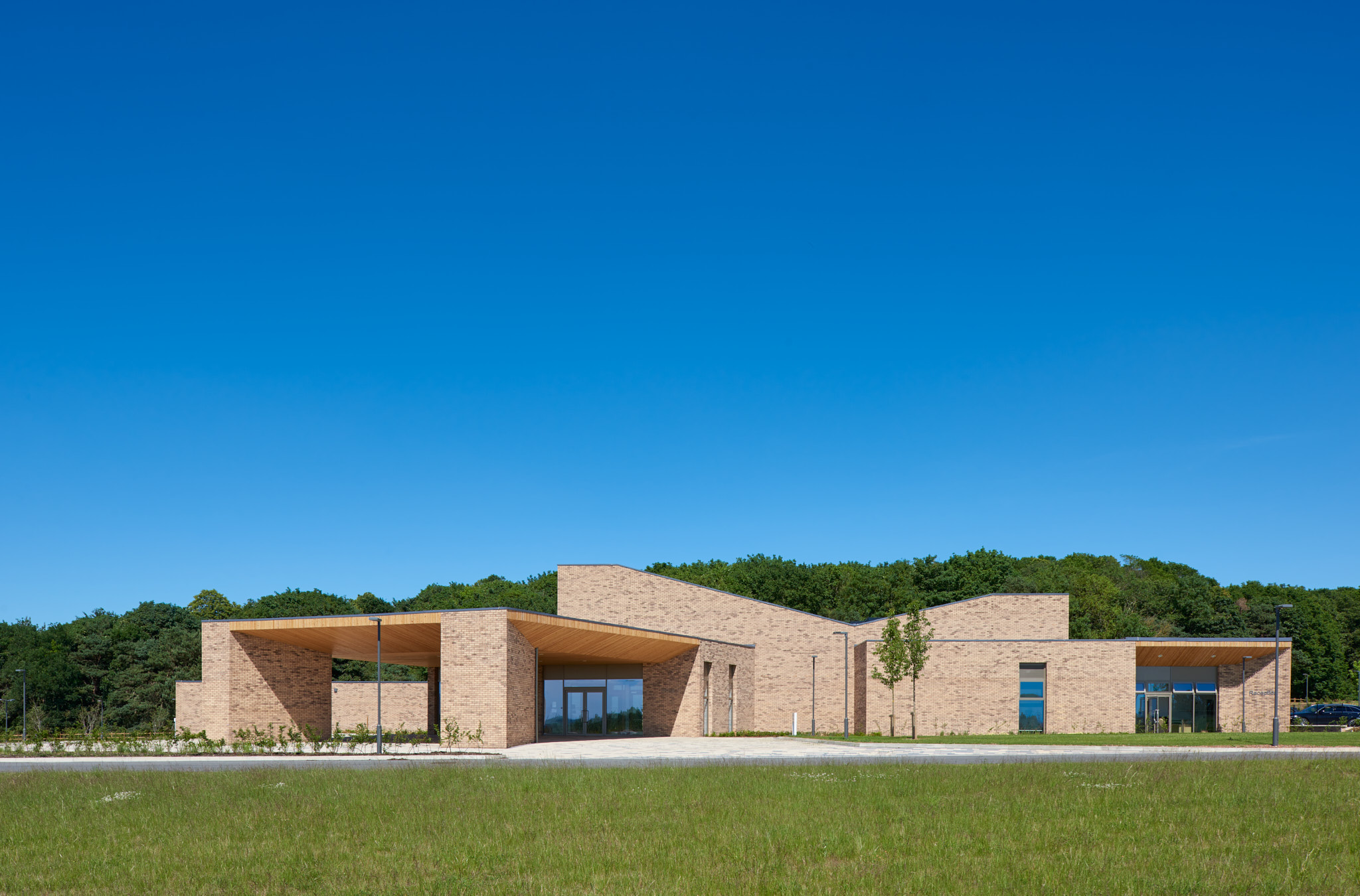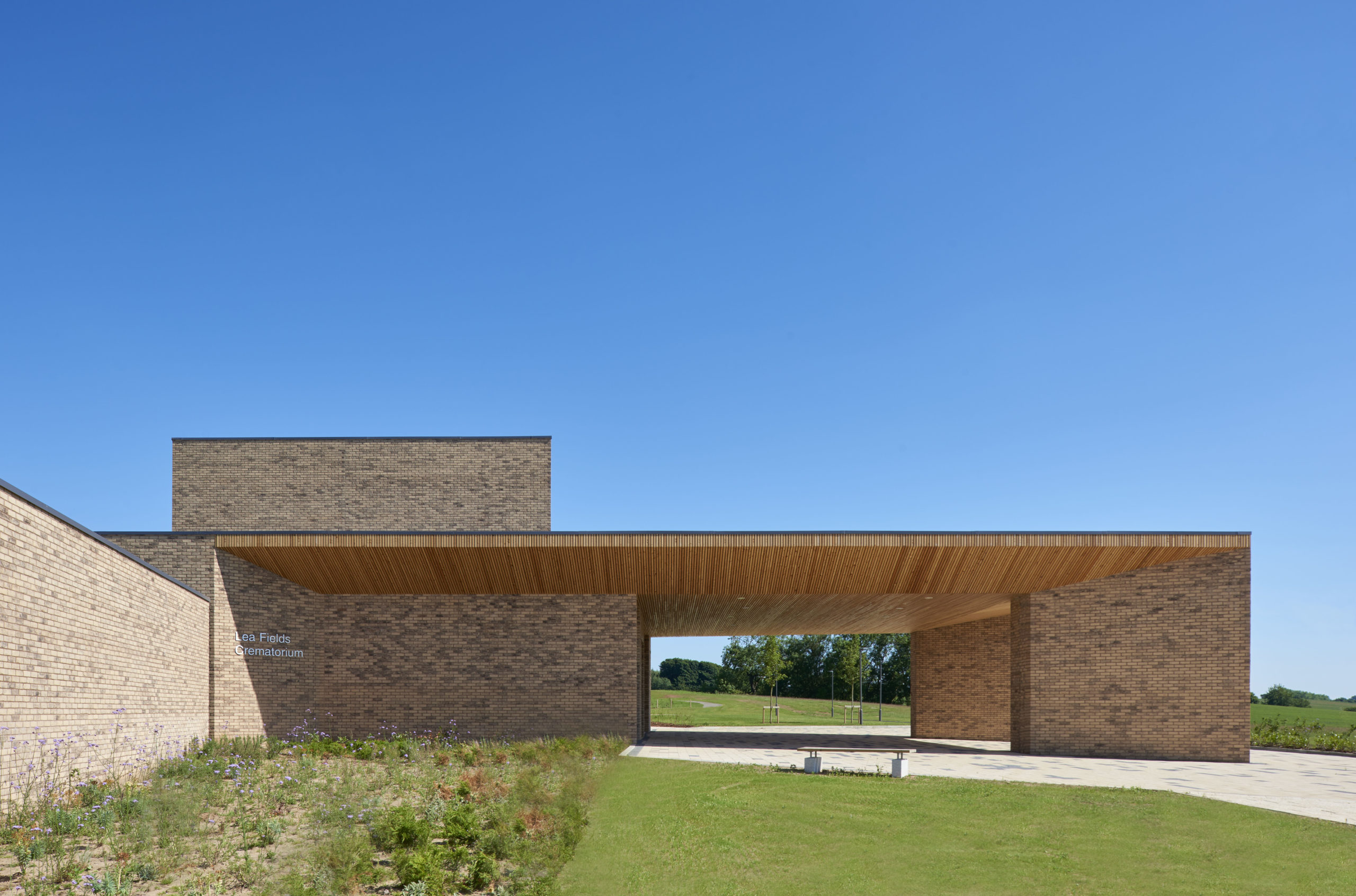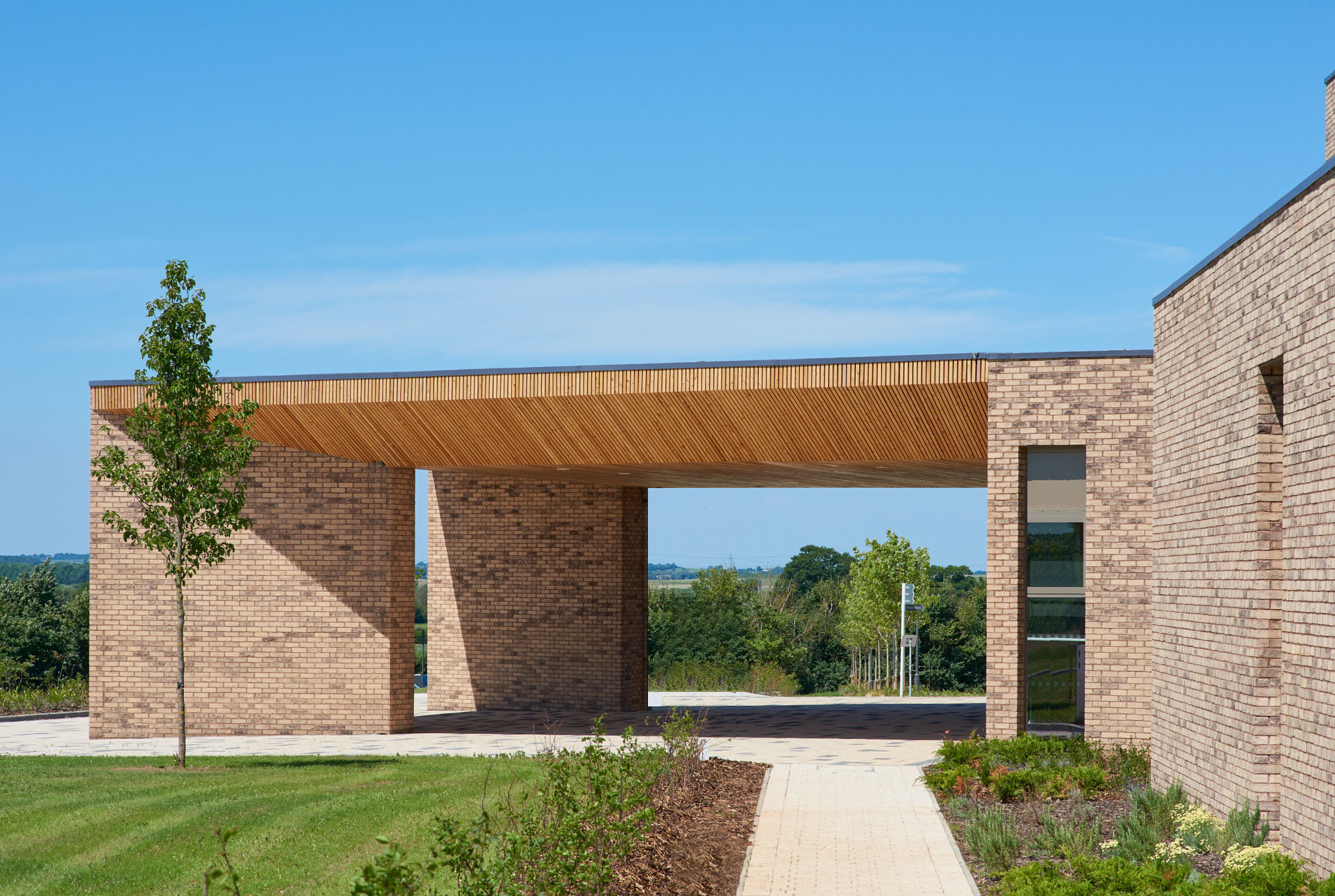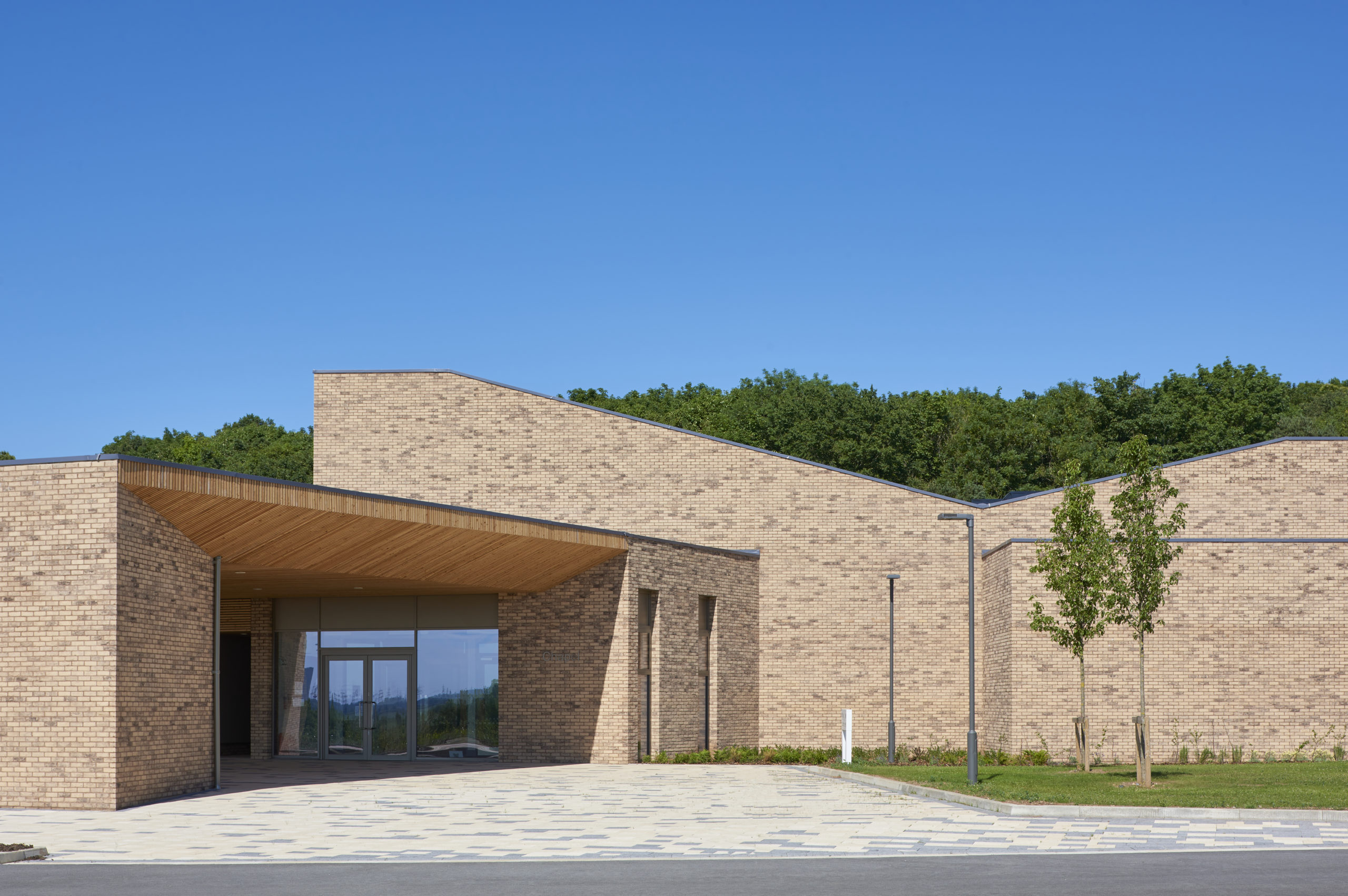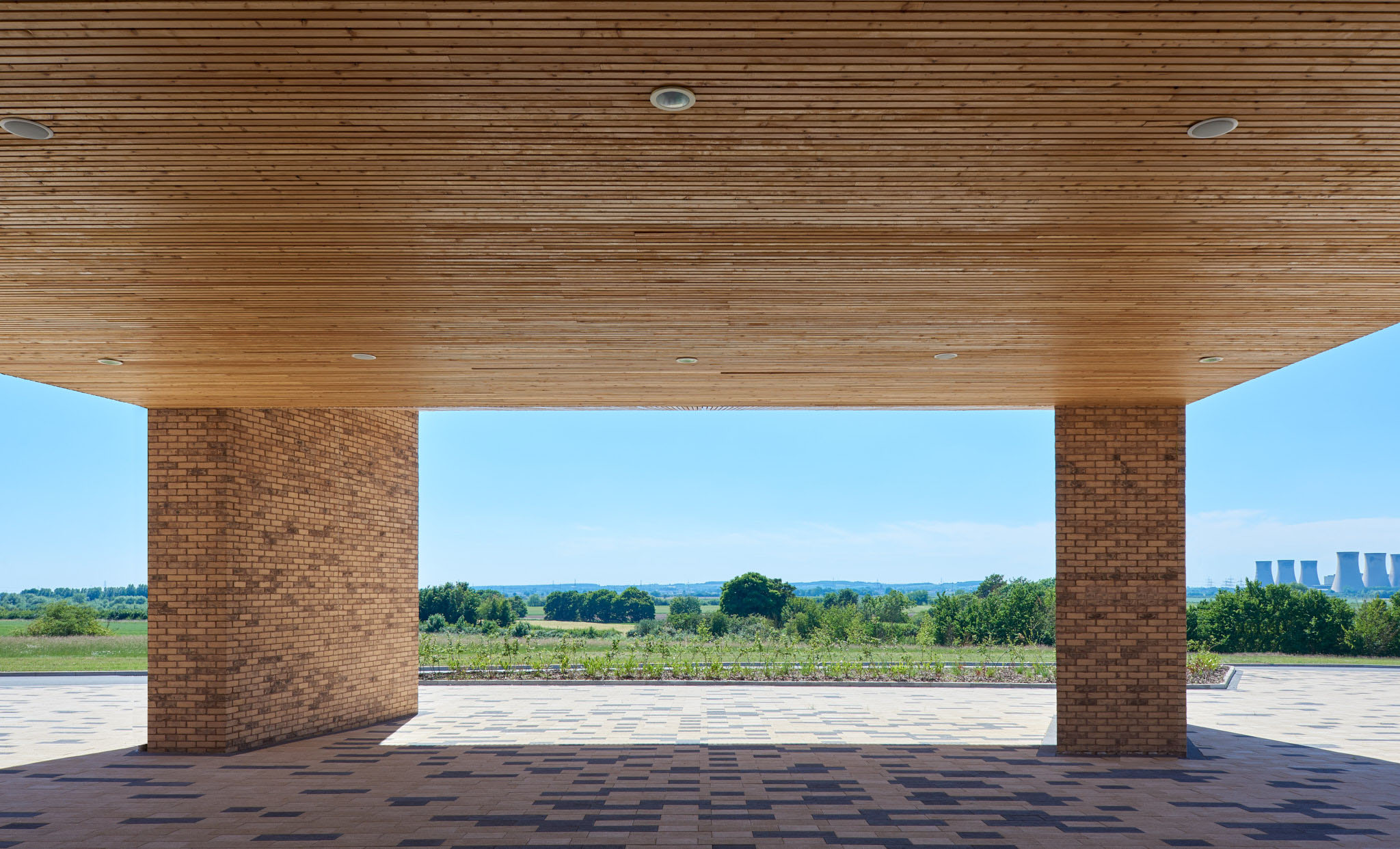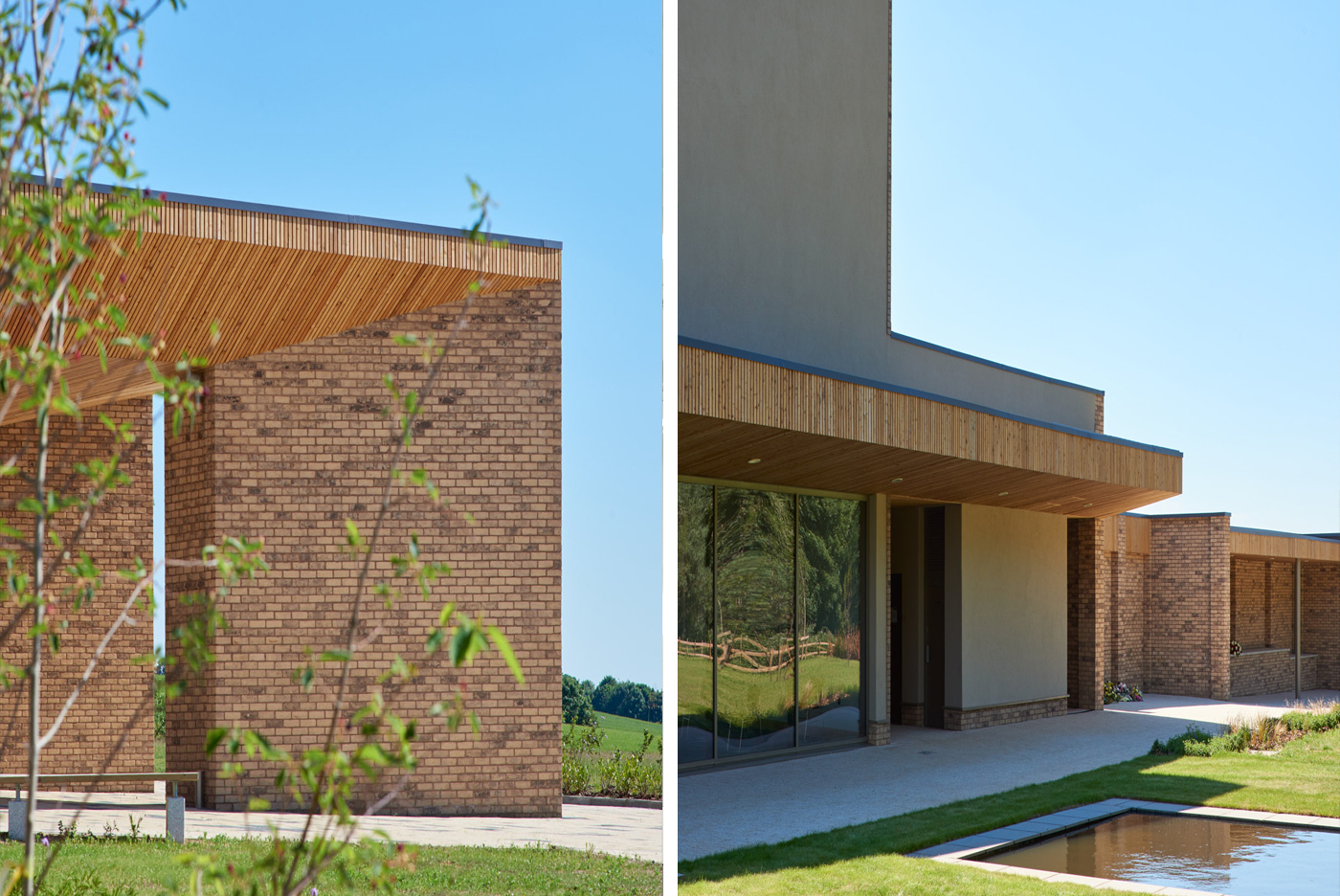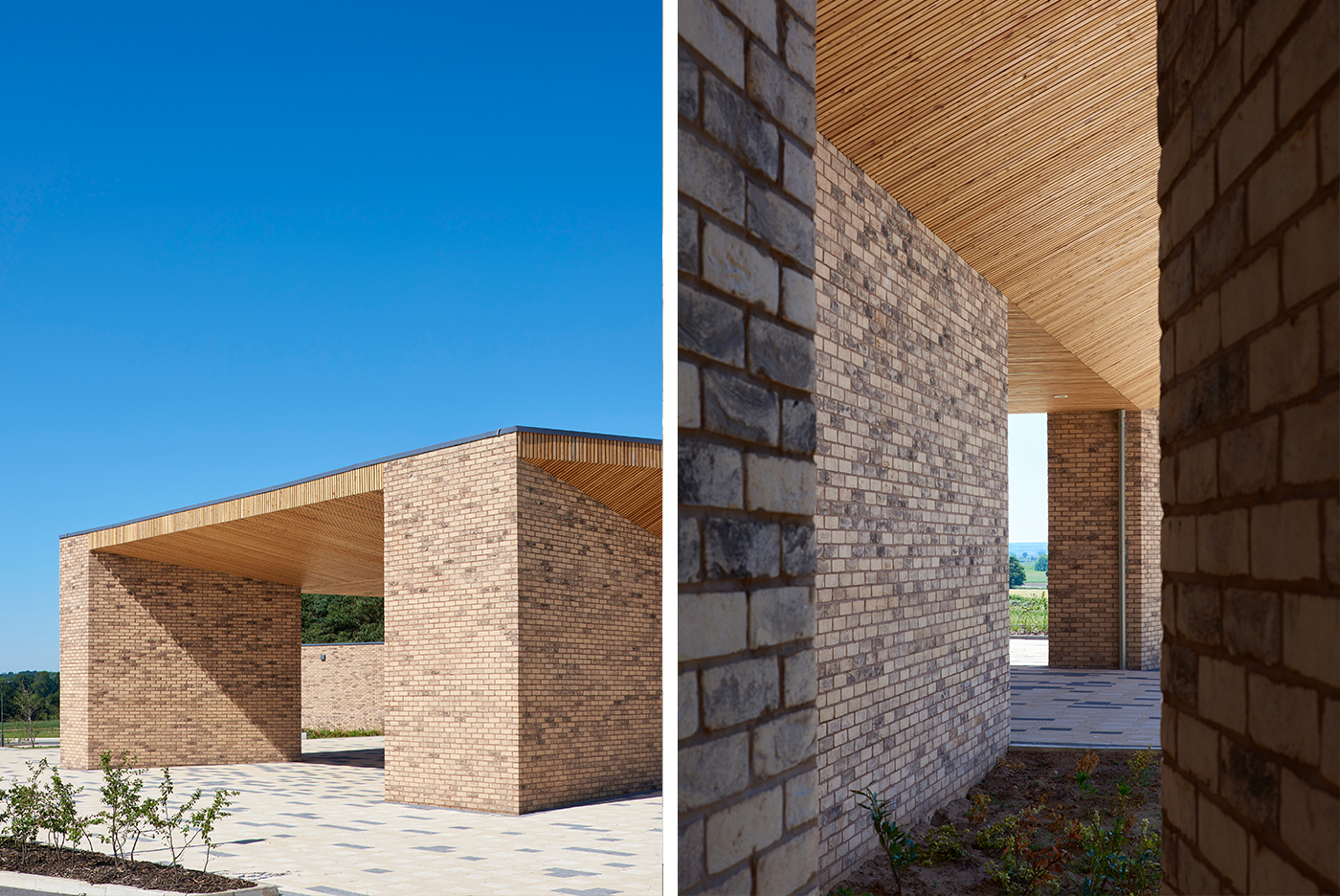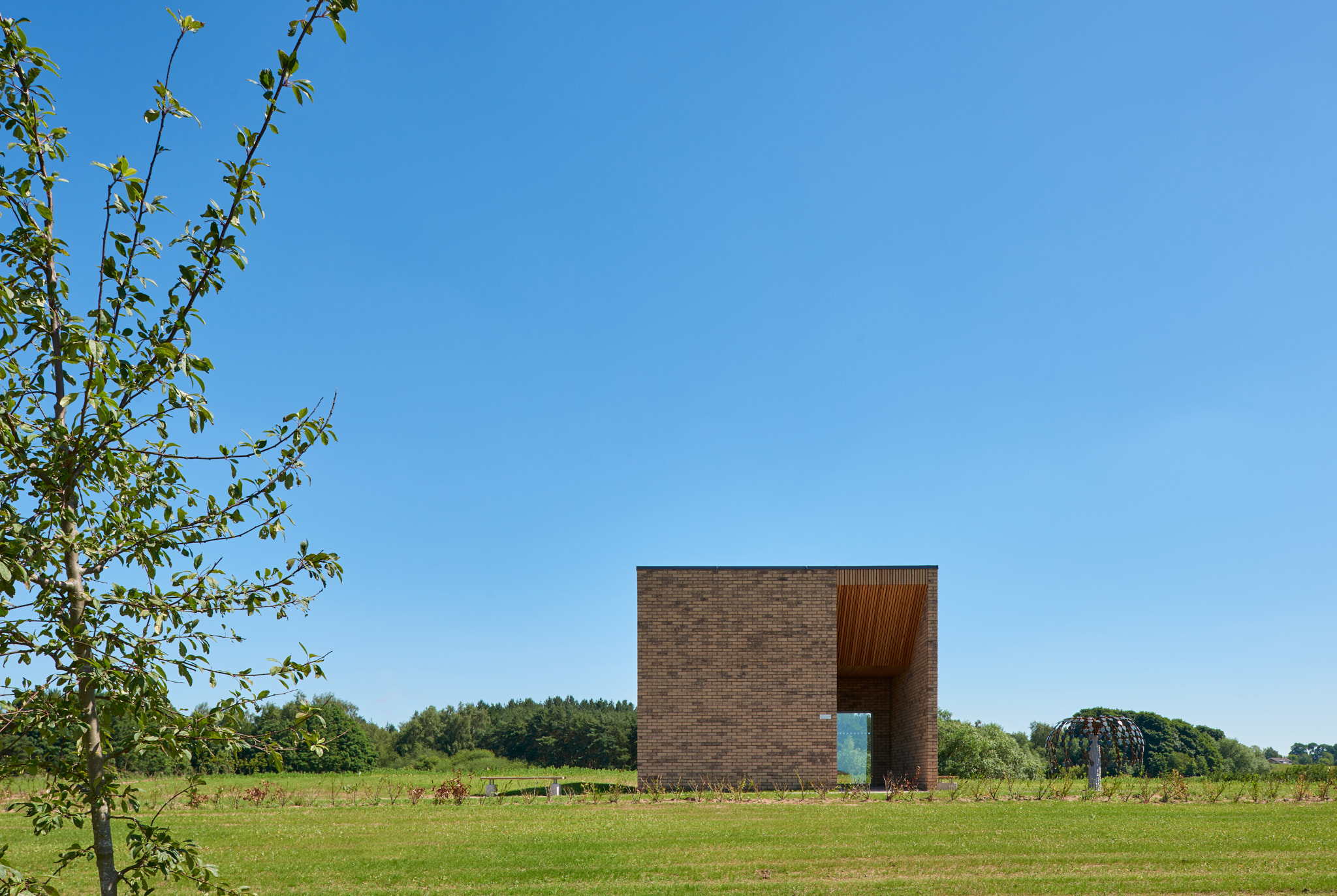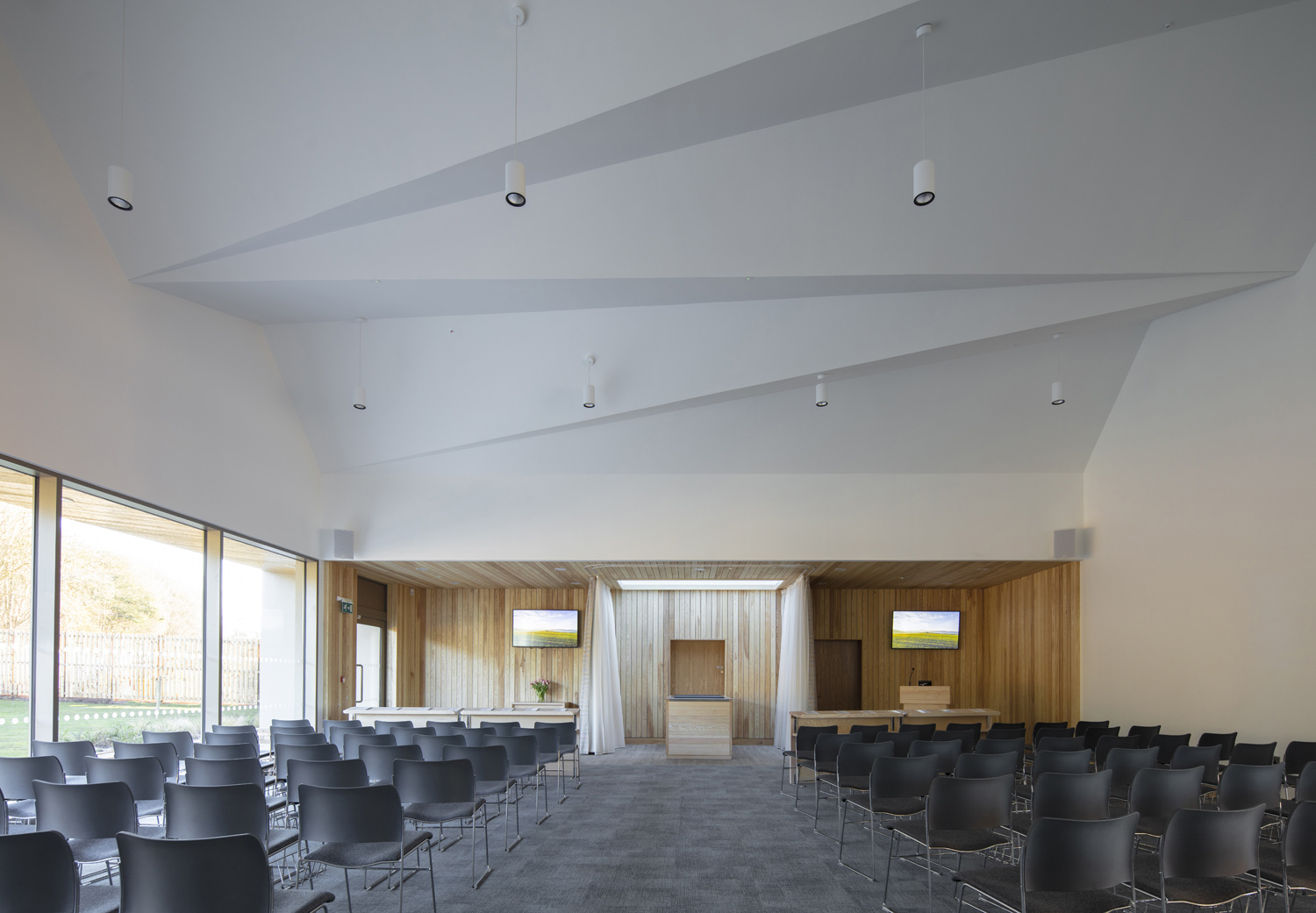The masterplan for the parkland includes both formal and informal landscape gardens. The overall design is underpinned by extensive consultation and rigorous control of materiality and detail. The new building has been designed to enhance the overall feeling of tranquillity and peace, offering a much needed service to bereaved families both in and around West Lindsey. One of the key objectives of the design is that different groups of mourners do not mix with each other while visiting the site. The landscape concept also aims to answer the challenges of the site topography constraints, furthermore creating a coherent architectural environment.
The massing, layout and use of the main building is directed by this landscape strategy. The procession of the congregation, both from the main cortège route and the car park, allows the building to welcome and hold mourners.
The Chapel is one of the most important rooms within the building. The demands of this space, both by visitors who congregate here and by staff who manages it, requires it to be flexible and high performing. Internally, the folded suspended soffit form gives a sense of occasion and celebration, without dictating a specific religious bias. Views to the Protected View, provide for an alternative view – away from the coffin, should this be needed.
The earthy material palette of brick, timber and bronze help create a series of calming and contemplative spaces inside this crematorium. The materiality of the proposal comprises of three key elements: an elegant brick volume that defines the form of the building throughout; the use of natural materials both internally and externally to place the building within its landscape, and the carefully considered large bronze framed window panels to articulate the brick building and offer views across the wider site and beyond.
The principle organising feature of the landscape design is an axis which runs across the front of the crematorium building and continues out to connect the various site features for example the memorial gardens, the car parks and the building entrances. Responding to site topography the main axis climbs eight metres to a new Chapel of Remembrance placed specifically at the site’s highest point. Common complications of the crematorium brief occur as services begin and end. In order to reduce the risk of crossover roads and pedestrian routes have been carefully considered across the site and sensitively set within the landscape.
Photography by Jonathan Gooch
Photography by Electric Egg
